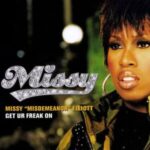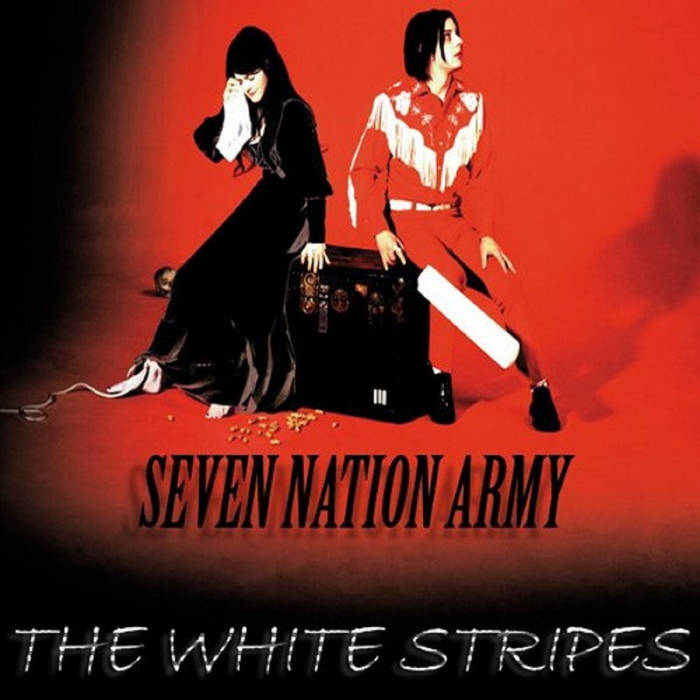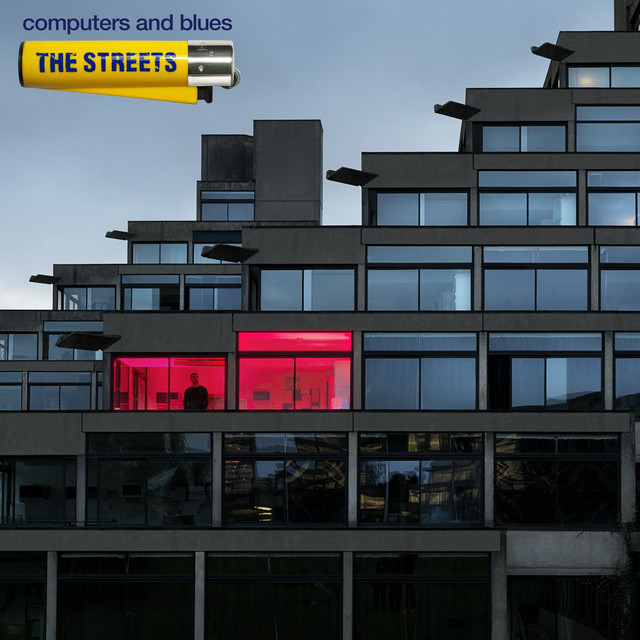 Some songs hit like lightning. Others change the weather system entirely. Missy Elliott’s “Get Ur Freak On” didn’t just hit—it detonated, sending shockwaves through hip-hop, pop, and electronic music that are still being felt more than two decades later. Released in 2001, this track wasn’t merely a hit single—it was a cultural event, a declaration of artistic independence, and a sonic experiment that somehow conquered the mainstream. From its opening twangy riff to its hypnotic rhythm and Missy’s otherworldly flow, “Get Ur Freak On” is the sound of the future announcing itself, and everyone else scrambling to catch up.
Some songs hit like lightning. Others change the weather system entirely. Missy Elliott’s “Get Ur Freak On” didn’t just hit—it detonated, sending shockwaves through hip-hop, pop, and electronic music that are still being felt more than two decades later. Released in 2001, this track wasn’t merely a hit single—it was a cultural event, a declaration of artistic independence, and a sonic experiment that somehow conquered the mainstream. From its opening twangy riff to its hypnotic rhythm and Missy’s otherworldly flow, “Get Ur Freak On” is the sound of the future announcing itself, and everyone else scrambling to catch up.
This wasn’t the first time Missy Misdemeanor Elliott had reinvented the game, but it was the moment the world stopped, turned up the volume, and said, “What the hell is that—and why do I love it so much?”
The Beat That Broke the Mold
The first few seconds of “Get Ur Freak On” are instantly recognizable: a piercing, exotic string riff that sounds like it’s floating in from another dimension. That riff—played on a tumbi, a single-stringed Indian instrument—became one of the most iconic hooks in modern music history. It was unlike anything on American radio in 2001. While most hip-hop at the time leaned on heavy bass and soul samples, producer Timbaland built this track around South Asian sounds, blending them with an unrelenting bounce that felt alien and primal all at once.
This wasn’t cultural appropriation—it was cultural fusion, visionary and respectful in its scope. Timbaland had been experimenting with international textures for years, but “Get Ur Freak On” was the moment where he and Missy took that experimentation fully global. The beat lurches forward with an infectious, syncopated rhythm, punctuated by tabla hits, handclaps, and guttural vocal samples that sound like coded transmissions from a cyberpunk universe.
It was strange, bold, and utterly irresistible. Every element—the slap of the percussion, the call-and-response shouts, the deep, echoing bassline—felt alive. It wasn’t just a beat you danced to; it was a beat that took control of your body.
Even now, it’s hard to believe this was a mainstream radio single. “Get Ur Freak On” was fearless in its weirdness, but it didn’t care about fitting in. It made its own lane—and then everyone else started driving in it.
Missy Elliott: The Architect of Cool
Of course, no one but Missy Elliott could have pulled this off. Her presence on “Get Ur Freak On” is pure command—playful, confident, and dripping with charisma. She doesn’t just rap over the beat; she rides it, twists it, toys with it, and bends it to her will.
From the opening shout—“Headbanger, check it out!”—Missy steps into full control mode. Her flow is elastic, snapping between English, patois, and nonsense syllables with ease. Her voice becomes an instrument, percussive and melodic at the same time. Every bar is filled with swagger, humor, and self-assured power.
“Holla! People sing around / Now people gather ’round / Now people jump around.”
These lines aren’t just commands; they’re invocations. Missy turns the track into a ritual, summoning a dancefloor army with nothing but her voice.
Her wordplay is tight and witty, mixing braggadocio with absurd humor—classic Missy. She flips traditional rap tropes on their head, turning what could’ve been a simple party track into a manifesto of individuality. “Get Ur Freak On” isn’t just about dancing or sex—it’s about freedom. It’s an anthem for anyone who’s ever wanted to express themselves without apology.
At the time, female MCs were often forced into narrow archetypes: hyper-sexualized or overly hard-edged. Missy refused both. She carved out her own identity—funny, fierce, and futuristic. She wore garbage bags as fashion statements, turned herself into CGI avatars in videos, and rapped about embracing weirdness before it was cool. “Get Ur Freak On” distilled all of that into one perfect moment.
A Masterpiece of Sound Design
Sonically, “Get Ur Freak On” was—and remains—a masterclass in minimalism and innovation. Timbaland and Missy built the track around negative space, using silence as rhythm. The tumbi loop repeats hypnotically, but it never feels static. Timbaland subtly manipulates it throughout the song, adding echoes, cutting frequencies, and layering textures in ways that feel almost symphonic.
The percussion—part programmed, part live—hits like nothing else. There’s a rawness to it, a sense that you’re listening to a beat being built in real time. Every snare hit feels intentional. Every silence feels loaded.
Then there’s the vocal production: Missy’s ad-libs, whispers, and layered harmonies are mixed to sound like they’re coming from every corner of the room. You can feel her circling the listener. It’s immersive before “immersive” was a studio buzzword.
The song also includes one of the boldest production choices of the early 2000s: a sudden, deliberate pause near the end. The music drops out completely, and you hear Missy shout, “QUIET!” before the beat slams back in harder than ever. It’s a power move—one that shows absolute confidence in the groove. The silence becomes as powerful as the sound.
That kind of sonic control is what separates Missy and Timbaland from their peers. They weren’t just making songs; they were making experiences.
The Video That Launched a Thousand Trends
“Get Ur Freak On” wasn’t just an audio revolution—it was a visual one. The music video, directed by the great Dave Meyers, is one of the most recognizable clips of the MTV era. Set in a surreal, industrial world dripping with sweat, grime, and attitude, it looked like a hip-hop fever dream come to life.
The visuals were pure Missy—equal parts bizarre and beautiful. One moment she’s swinging from ropes; the next, she’s spitting verses upside down. The choreography, the costumes, the camera work—everything was exaggerated and cinematic. Missy turned herself into a living cartoon, defying physics and gender expectations with every move.
Cameos from Ludacris, Eve, LL Cool J, and Ja Rule reminded viewers that Missy was at the center of the culture—but also above it. She wasn’t just part of hip-hop’s golden era; she was bending it to her own design. The video won Best Hip-Hop Video at the 2001 MTV VMAs and set a new standard for what a rap video could be—artful, abstract, and unapologetically weird.
A Cultural Earthquake
When “Get Ur Freak On” dropped, it was an immediate hit—but it wasn’t just popular. It was transformative. The song reached the Top 10 on the Billboard Hot 100 and became an anthem in clubs, gyms, and car stereos around the world. But more importantly, it changed the sound of hip-hop forever.
Before this song, most mainstream rap production revolved around American soul, funk, and R&B samples. After it, global influences became fair game. Timbaland and Missy’s fusion of Indian instruments and hip-hop rhythms opened the floodgates for experimentation. You can hear echoes of “Get Ur Freak On” in later works by everyone from M.I.A. and Major Lazer to Kanye West and Beyoncé.
Missy’s persona—bold, body-positive, gender-defying—also paved the way for a new generation of artists. Without Missy, there’s no Lizzo, no Doja Cat, no Megan Thee Stallion. She made it possible for women in hip-hop to be unapologetically weird, playful, and powerful all at once.
Even outside hip-hop, “Get Ur Freak On” left a mark. It’s been used in movies (Zoolander, Stick It, The 40-Year-Old Virgin), TV shows (Glee, Brooklyn Nine-Nine), commercials, and countless dance competitions. It’s one of those songs that instantly changes the energy in a room—its pulse is so infectious, it transcends time and genre.
Lyrics That Still Slap
“Get Ur Freak On” is often remembered for its beat, but the lyrics deserve their own flowers. Missy’s wordplay is razor-sharp and mischievous. She flips between cocky one-liners and surreal boasts, dropping bars like:
“Silence when I’m spittin’ out the mouth don’t get it twisted, get ur freak on!”
She celebrates individuality, style, and power without ever sounding self-serious. The repetition of the title phrase—“Get ur freak on”—becomes hypnotic, a mantra of confidence. It’s both a command and a liberation: let go, express yourself, do you.
That sense of empowerment is why the song has aged so well. It’s not tied to a specific moment or movement. It’s eternal—an anthem for every person who’s ever wanted to stand out.
Awards, Accolades, and the Test of Time
The industry took notice immediately. “Get Ur Freak On” earned Missy Elliott a Grammy for Best Rap Solo Performance in 2002, and the song has appeared on virtually every “greatest songs” list since. Rolling Stone ranked it among the 500 Greatest Songs of All Time and Top 100 Hip-Hop Songs Ever. Pitchfork placed it near the top of their Best Songs of the 2000s list.
But numbers and rankings only tell part of the story. What really matters is how alive “Get Ur Freak On” still feels. Put it on at any party—doesn’t matter if it’s Gen Z or Gen X—and people will instantly move. That’s timelessness. The production still sounds futuristic, the flow still hits like it dropped yesterday, and the attitude remains unmatched.
It’s also one of those rare songs that feels both chaotic and controlled, complex yet effortless. That’s the hallmark of true genius—it feels natural because it’s perfect.
The Legacy of a Pioneer
“Get Ur Freak On” wasn’t just Missy Elliott’s signature hit; it was her coronation. It proved she was more than a rapper, more than a producer, more than a trendsetter—she was a visionary. She didn’t follow hip-hop’s evolution; she shaped it.
For Timbaland, it was another masterstroke in a career defined by innovation. But for Missy, it was something more: a statement of identity, creativity, and liberation. It was proof that a black woman from Portsmouth, Virginia could change the entire trajectory of global pop music.
When Missy performed “Get Ur Freak On” at the Super Bowl halftime show with Katy Perry in 2015, younger viewers who’d never heard of her were stunned. The energy was so immediate, so magnetic, that she became a trending topic for weeks. The next day, her Spotify streams exploded by over 700%. That’s the kind of power this song holds—it doesn’t age; it awakens.
Conclusion: The Blueprint of the Future
“Get Ur Freak On” isn’t just a classic hip-hop song—it’s a cultural artifact of creativity unleashed. It embodies everything Missy Elliott stands for: originality, confidence, humor, and innovation. It’s a track that shattered every expectation of what hip-hop could sound like and who could define it.
Two decades later, it’s still ahead of its time. Every time that tumbi riff kicks in, it feels like the first time. Every time Missy shouts, “QUIET!” it’s a reminder that she doesn’t just make music—she commands it.
“Get Ur Freak On” is the sound of the future arriving early. It’s the sound of self-expression with no boundaries. It’s Missy Elliott at her most fearless, and hip-hop at its most adventurous. And no matter how many years pass, it will always get the freak on.


